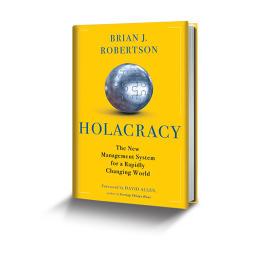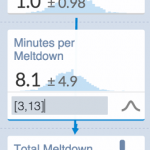Holawhat? Meet The Alt-management gadget Invented by using A Programmer And utilized by Zappos
Zappos, Medium, and David Allen have all embraced the non-hierarchical administration system. will have to your organization adopt it too?
 Tony Hsieh provided his virtually four,000 workers an ultimatum remaining week: accept Holacracy or depart.
Tony Hsieh provided his virtually four,000 workers an ultimatum remaining week: accept Holacracy or depart.
whereas the phrase could conjur photography of a brand new-age cult, Holacracy is an alternative organizational structure that has been adopted by way of companies around the world—including Medium, the alt-publishing platform from Twitter cofounder <a class="fc-plugin people-page" href="http://www.fastcompany.com/person/ev-williams" data-name="peoplePages" data-id="fastcompanycompany, the productivity consultants. It sheds conventional hierarchies for self-governing teams that get work done thru tactical conferences. Zappos is the largest company to have adopted the device, and the transition hasn't been entirely easy. by way of multiple experiences and now an admission in an internal memo, first posted through Quartz and received with the aid of quick company, individuals do not love the idea of relinquishing their supervisor titles.
nevertheless, Hsieh is anxious to totally include Holacracy, and goes all-in on the new structure with the aid of offering three months severance to people who do not need to adapt. “we have now been operating partly underneath Holacracy and partly below the legacy administration hierarchy in parallel for over a year now,” Hsieh writes in the memo. “Having one foot in one world while having the other foot within the other world has slowed down our transformation in opposition to self-administration and self-group.”
Adopting Holacracy isn’t cheap or simple. The machine has its own set of rules and lingo, and is difficult to put in force. The Holacracy dad or mum firm, HolacracyOne, helps firms transition via offering consulting products and services that run from $50,000 to $500,000, relying on how long it takes to reach self-sufficiency. Even for far smaller firms, like Medium, which implemented Holacracy when it was once only a couple dozen individuals in 2012, the experience takes a couple of years and has a steep learning curve.
Holacracy was invented by means of Brian Robertson, a 35-yr-outdated former programmer with barely any management expertise. He created Holacracy in 2007 because he had a “burning experience that there needs to be a better method to work together,” he said in an interview with quick firm. Robertson, who describes himself as a coding savant, says he taught himself to program at age 6. by the time he used to be thirteen, he says he was once charging $25 an hour for tool development during the Sierra network, an early competitor to AOL. “they’d no thought how outdated I used to be” Robertson stated. “I didn’t even comprehend sufficient to call my industry.”
After chucking up the sponge of the Stevens Institute of know-how, 17-yr-outdated Robertson managed to get a job at Analytical pics, an aerospace company known for its perk-laced work culture. “You couldn’t beat the advantages, the atmosphere, the culture. From a traditional view, they had been truly cool” he stated. that they had free meals, a gymnasium, and a game room. Robertson had a really perfect boss, who he nonetheless considers a chum and mentor. Analytical images even gained an award for being one of the vital perfect small firms to work for within the U.S. by means of the great situation to Work Institute.
Robertson hated it.
“The bureaucracy gave the look to be arrange in a method that people couldn’t use their gifts, their skills,” Robertson mentioned. In 2001, he started his own company to determine a better way to run one.
Robertson certainly is not by myself in his disdain for prime-down order. Holacracy comes out of and operates within a milieu of unconventional ways to work which have grow to be more standard within the last decade as youthful and more visionary CEOs eschew custom and seek out a new approach of working. among the options are sociocracy, Freedom at Work, the Morning big name Self management system, and the consequences most effective Work surroundings (ROWE). every of these methods, including Holacracy, has a definite option to the identical basic drawback. “the industrial age running system is now not compatible,” stated Traci Fenton, the founder and CEO of WorldBlu, which preaches the freedom at Work method used by lots of of firms global, including Zappos earlier than it adopted Holacracy. (Zappos still uses WorldBlu’s services, which aren’t incompatible with Holacracy.*) “it’s a must to transfer into the brand new age to realize we’ve got outgrown the clothes.”
The hierarchical organization dates again to the commercial revolution, when firms wished to preserve accountability whereas using large numbers of people. “It was a way of organizing labor such that the division of labor can be extra productive and would be capable to do duties better time and again in a predictable manner,” says Ethan Bernstein, who studies organizational habits at Harvard industry college.
because the American body of workers moved away from the assembly line and into the cubicle, work no longer required individuals to many times full explicit tasks. the ideas economy prizes concepts, creativity, and collaboration—all of which will get stifled by hierarchy. One Stanford learn about that checked out 80 completely different groups, both actual world and lab simulated, found that hierarchy ended in conflict at greater ranges of management. “i discovered they didn’t reach as excellent of a collective or a gaggle solution,” says Lindred Greer, who studies hierarchy on the Stanford school of trade.
as a result, the connection between supervisor and employee has organically shifted over the previous few many years. nearly 1/2 of the CEOs interviewed for a 2015 document with the aid of the London model consultancy Wolff Olins mentioned that they had structured their companies to give staff extra autonomy. The modern firm is extra of a conversation than a mandate.
but while the hierarchy could also be pulling down in lots of companies, the latest wave of non-traditional constructions argue for more radical modifications. The online game maker Valve, perhaps essentially the most extreme example, forgoes titles and managers altogether. In a perfect Holacracy, it’s unimaginable to tell who the CEO is.
Robertson spent six years exploring these different different organizational techniques, choosing and selecting the elements he liked highest—and attempting them out on the 12 staff who he employed to build device merchandise. He borrowed theories from the agile tool motion and David Allen’s Getting issues executed. by 2007, Robertson took the “early embryo” of Holacracy and alongside with his industry companion Tom Thomison, a former management advisor, based HolacracyOne, the Pennsylvania based totally group that acts as a more or less consulting firm for firms that need to adopt the system.
along with the personal consulting services and products, HolacracyOne deals seminars that may price up to $4,000 a seat, and it sells an organizational tool utility known as GlassFrog that runs $500 a month. The tool is optional, however each Medium and Zappos use it. HolacracyOne also has a wholesome trade coaching 1/3-celebration coaches. Robertson is writing a e book slated to come back out this summer time.

not like a few of its contemporaries, Holacracy does not advocate for a flat group. Holacracy organizes work (and folks) round circles inside circles inside circles. folks inside those circles have “roles” that provide certain group participants full control over their domains. any person at Medium, for example, is in command of fonts and makes all font-associated decisions. contrary to headlines (including one on this web site), Medium still has managers, because every circle has a pacesetter. however not like a standard manager, now not all selections have to head thru that one individual, and that particular person can alternate—the structure of a Holacracy is very fluid. that is why people should not have titles, they have got roles that continuously do exchange. the principle objective is to distribute authority all through a company. Fewer selections bottleneck via a boss, that means quicker resolution making and in theory faster innovation. All of that makes Holacracy specifically appealing to corporations that need to retain the benefits of quick-transferring startups as they grow.
“Holacracy isn’t going to take a nasty industry idea and make it be triumphant. It’s not going to take a group that doesn’t have the skills and make it good,” Robertson said. “it’s extra of an accelerant,” he mentioned. He likens Holacracy to getting a new pc. generally, self-administration programs promise happier workers, more healthy workforces, and in consequence a more successful firm. Hsieh is so eager to ditch hierarchy as a result of he wants his company to function with the effectivity of a bustling metropolis, now not a clunky company behemoth. Cities after they double in size get 15% more productive, firms lose productiveness as they develop.
utterly restructuring an organization from the standard org chart tree to circles is one of the reasons the transition to Holacracy tends to be rocky. To create circles and roles requires a very regimented course of, known as a governance meeting. Then, there’s a separate, additionally very systematic meeting for assigning explicit individuals to explicit jobs. Holacracy doesn’t have any rules for firing or compensation. Some corporations, like Medium, create special circles that deal with HR. some other method is to offer individuals roles that empower them to fireplace and promote. firms can spend plenty of time serious about their structure, slightly than doing exact work, especially in the beginning.
all the confusing rules and terminology are inclined to scare individuals, but that’s intentional. Obscurity, Robertson says, is part of a strategy to hook the right converts. “My sales way is to check out to speak people out of it,” he says. The Holacracy web site does not make it easy to bear in mind what a company might be getting into. The “in simple English” version of the Holacracy structure is more than one mouse scrolls lengthy. Robertson likens his approach to that of Nigerian electronic mail scammers. “they’re filtering out all the people that are not ridiculously gullible, most effective the ones which can be really good objectives are left. For us, it is the positive version of that.” Robertson wants to attract people that get it, like Hsieh and Medium CEO Ev Williams.
in fact, simply because bosses can disregard the eccentricities of Holacracy for its attainable, workers don’t seem to be at all times as open. The name by myself is off-putting. When Williams first presented Holacracy to Medium, more than one staff thought it sounded cultish. “i believe it used to be Holawhat? That sounds like a cult,” Jean Hsu, an engineer at Medium instructed me.
Accepting Holacracy is like learning an advanced strategy game, like Settlers of Catan, says Robertson. “in case you’ve ever discovered to play a posh board sport, all you see are a bunch of principles,” he says. “That said, for those who play the sport with people who have played it before they walk you via it, sooner or later the principles definitely fade to the historical past.” similarly, the best way to research Holacracy is by way of enjoying. for brand new converts, Holacracy runs a taster week, throughout which a specialist simulates tactical and governance meetings.
Medium, which carried out Holacracy about three years in the past, had a tough adjustment phase, too. Governance meetings can take hours. folks obtained stressed out about working out the device, and began neglecting their jobs in consequence. “Being dangerous at one thing is exasperating,” Williams instructed me. “to do this one thing else that we’re good at in truth, we now have to do that thing we’re dangerous at. As a group, we’re going to do that awkward dance. It’s exhausting and messy and it causes stress, and also you’re like, ‘why are we doing this?'”
The tactical conferences, a alternative to your standard, in most cases very painful weekly staff gathering, gained over Medium’s group of workers—and it can be simple to look why, they are fast and efficient. This February I sat in on one at Medium’s San Francisco headquarters, and whereas from the outside it gave the look of a regular meeting, the method used to be incredibly regimented. An engineer with a clump of curls named Koop facilitated, making certain that conversations stayed heading in the right direction. the heart of the tactical assembly is a process referred to as stress processing, the place, separately, staff participants speak out their “tensions,” which in Holacracy land manner any problem somebody might have. In Medium’s case tensions ranged from the design of the web page to the circle’s name. as a result of Koop, the workforce stayed on track, getting through 20 concerns in about 25 minutes. The assembly additionally strikes quick as a result of “processing a stress” simply approach selecting a subsequent step, no longer coming to an answer.
Over 1/2 a dozen current and former employees I spoke with—even ones who failed to like Holacracy basically—mentioned the benefits of tactical meetings. Having sat via one at Medium, i can confirm that they are method higher than usual team conferences. Stuff gets done, quick.
At this level, it can be too early to tell if Holacracy is working for both Zappos or Medium, says Robertson. Holacracy, then again, uses the David Allen company as a case study. even supposing, even CEO Mike Williams considers it “a work in growth.” unlike Zappos, Medium has a less dramatic relationship with Holacracy. most people I talked to on the company adore it. (despite the fact that they may be very self conscious about how weird it sounds. questions about Holacracy are frequently met with awkward laughs.) “We will be organizing a distinct approach, however I roughly could not think about it given what we’re trying to do,” Kate Lee, a senior editor at Medium, instructed me. alternatively, the corporate is far smaller (about 80 people), applied Holacracy early on, and has just a few extra years apply. additionally, Medium isn’t a success by means of the most usual of metrics: it makes no money. “it is [Holacracy] not a whole gadget. it’s no longer the answer,” in and of itself, introduced Bernstein.
by means of Hsieh’s standards, Zappos hasn’t reached its doable. The journey takes about five years and chaos at first is expected, says Robertson. “when I see everything that’s happening at Zappos, it’s all a part of the shift.”
This submit has been up to date to make clear Zappos on going relationship with WorldBlu.
(335)














